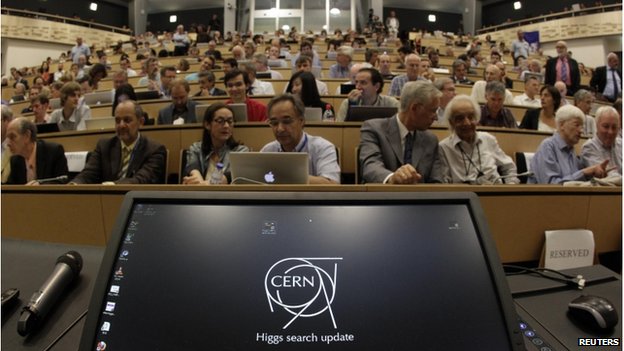Eyes on a prize particle_unpublished
Luis Álvarez-Gaumé and John Ellis in an article previously published in NATURE PHYSICS (VOL 7 | JANUARY 2011) trace the history of the formulation of the Higgs mechanism and discuss the importance of the long-theorized Higgs-particle. The Standard Model deals with three of the four fundamental forces; namely the electromagnetic the weak and the strong force. It is postulated that the breaking of the electroweak symmetry via the Higgs mechanism is what gives all massive particles their inertial mass.

The discovery of the Higgs particle plugs a gaping hole in the Standard Model, the sovereign theory of particle physics and could possible pave the way for new physics at the LHC. Álvarez-Gaumé and Ellis emphasize its importance by stating that particle physicists should "care [for the Higgs particle] because their standard model is nonsensical without the Higgs boson, and it could be the first in a whole unseen zoo of "elementary" spin-zero particles." In addition, the Higgs particle seems to influence the field of cosmology as well, as provides information for the inflationary period in the history of the Universe and could shed light on the search for dark energy. Finally, the Higgs mechanism informs the concept of symmetries and their breaking.

The LHC findings clearly enlarged our understanding about the structure of ordinary matter as well as about the formation and evolution of the Universe. The discovery of the Higgs particle could rank as one of the greatest achievements in physics that could be awarded with the Nobel Prize. However, it also poses a dilemma for the jury committee. Nobel prizes are traditionally given to a maximum of three people but in the case of the Higgs many more were involved, formulating the theory behind the mechanism and conducting the experiments that proved its existence. So, which of them should share a potential Nobel Prize?
Read the article: here
